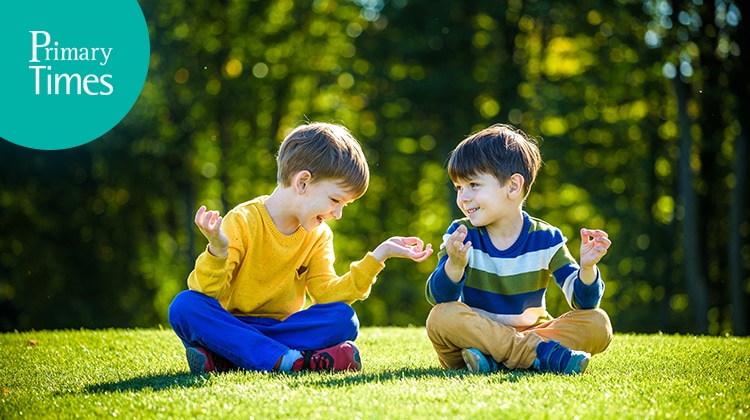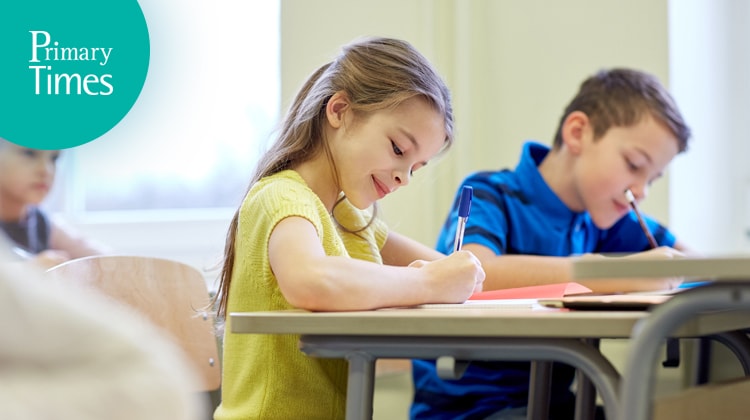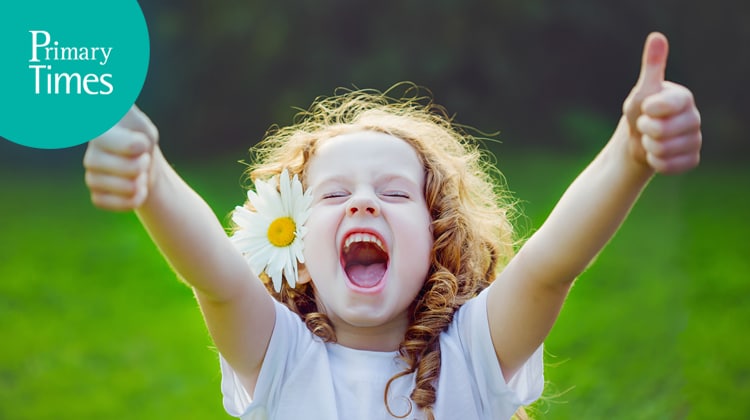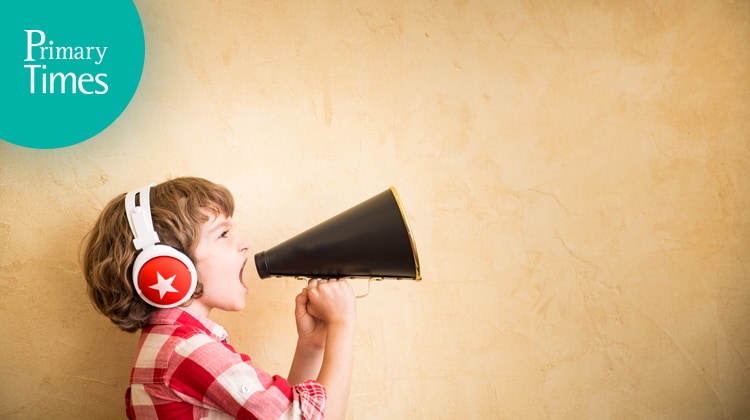
5 Tips for a mindful summer holiday

PRIMARY TIMES
The summer holidays can offer children and teachers an important opportunity for a break, to unwind and re-energize after a very challenging school year, for many full of changes and new ways of teaching and learning and disruption of routines due to the pandemic. Teachers and parents are looking for ways to support children over the summer holidays with approaches and strategies to improving their physical and mental wellbeing.
Mindfulness can help!
by Donatella Fitzgerald
What is mindfulness?
“Mindfulness means paying attention in a particular way: on purpose, in the present moment, and non-judgmentally.”
Jon Kabat-Zinn
What skills can mindfulness bring me as a teacher?
In the Pocket Guide to Mindfulness, Pearson 2019, teacher and Mindfulness expert at No More Shoulds Amy Malloy says ‘Mindfulness can help with paying attention, Focus and Concentration, Observation without judgement, acceptance and self-compassion, stress management and performance and productivity’.
Why use mindfulness in the classroom? >>
How can mindfulness help young learners during the summer holidays?
Research shows that regular mindfulness practice can help children’s emotional wellbeing, improve concentration, help positive sleep habits, enhance their ability to manage emotions and reduce psychological distress and give students strategies for staying calm in stressful or worrying situations. It can help engage their attention so they are more aware of what is happening around them and so they learn better and develop mindful habits which could help them on their journey through life. Mindfulness can help children focus on the present moment, feel less anxious and help them accept their new reality, new ways of playing, adhering to social distancing conventions and enjoying life day to day.
Mindfulness in Education>>
Tips for a mindful summer!
Tip 1 - Helping children to express their worries and name emotions.
So, how can we help our children during the summer holidays? Naming emotions can help children understand how they feel. In her Guide Mindfulness activities to help children cope with stress in the Pearson Primary Academy Resources, Amy Malloy says ‘many children may lack the language to express what they are feeling or even to recognize it’. In the guide you can find practical ideas and suggestions to use with children to help them express their worries, mindfully and with support.
Breath activity: worry bubbles
1. Sit together and invite your child to put their palms together.
2. Invite them to take a big breath in. As they breathe in, they can draw their palms further and further apart, spreading their fingers as they imagine blowing up a big bubble between their hands.
3. Invite them to whisper a worry into the bubble.
4. Invite them to blow the breath out nice and slowly. As they breathe out, they can imagine blowing the bubble (and the worry) away with a big sigh.
5. Twinkle the fingers back down to the lap, and start again, either with the same worry or a new one.
To access the Pearson Primary Academy free resources and Amy Malloy’s Guide to Mindfulness activities to help children cope with stress: Risorse didattiche pronte all'uso di Inglese >>
Tip 2 Training our children to focus on their breath
“A tutti sarà capitato di trovarsi ad affrontare un momento di stress particolarmente intenso, un momento di rabbia o, nel caso di un bambino, un momento di pianto disperato – indipendente dalla causa – impossibile da frenare. E a tutti sarà capitato di sentirsi dire (o di dire ad altri) ‘fai un bel respiro’.”
Giulia Abbiati – Guida dell’Insegnante Go Kids 2020 Pearson
In her guide ‘Mindfulness Activities to help children cope with stress’ (available in the Pearson Primary Academy Resources) Amy Malloy offers ideas to introduce Breathing activities in the primary classroom. ‘By helping children to focus on their breathing, we can teach them that even if things feel wobbly around them, their breath is always there. The act of focusing on the breath also helps settle the fight or flight branch of their nervous system into a calmer, more balanced state’.
Breath activity: counting breaths
1. Invite your child to sit with you.
2. Invite them to place their hands on their tummy and breathe in slowly so they push into their hands, counting slowly up to four.
3. As they breathe out, invite them to count up to six, as they slowly empty the belly and their hands lower back down.
4. Continue until they feel calmer. You can do this every morning or evening to help sustain balance. With younger children they might like a teddy on their tummy to push up and down!
(@Amy Malloy Pearson Primary Academy 2020 – this activity first appeared in the Pearson English Blog, 15 April 2020)
Guided breathing activities in Summer Adventures
In the Holiday Book Summer Adventures the children can find breathing activities in Italian that they can do with their families or on their own devised by Clelia Tollot. They can listen and follow the audio recording and repeat this every day. Tell parents the Holiday Book Summer Adventures gives the children this opportunity to have a guided mindfulness practice every day and the children can listen with their family members or on their own for a few minutes every day so the mindfulness activities become a habit and routine. Do one of the activities with the children in class before the summer holidays. Ask them to find a quiet place and sit in a comfortable position before they listen. Sitting up straight with their feet on the floor (if they are sitting on a chair) or sitting on the floor with their legs crossed. They can close their eyes and play the audio and follow…
Tempo di avventure estive con i nuovi compiti delle vacanze Pearson >>
Tip 3 - Helping students to notice what they see during the holidays and raise attention or concentration levels
Encourage your children to go on a nature scavenger hunt or a mindful walk every day. When they go on their mindful walk ask them to notice things they see on their walk. Things they haven’t seen or noticed before. This will encourage students to notice and be more mindful about what is around them. A nature or a beach scavenger hunt looking out for particular things, for example a pretty leaf, a strange shaped stone, a shell… and then reflect on what they have found and what they notice about it. To download worksheets for summer nature scavenger hunts, go to www.kidscando.it.
Tip 4 Practising Gratitude during the summer
A 2019 study published in the Journal of Happiness Studies1 found that gratitude is linked to happiness in children by age 5. This means that instilling gratitude in your kids at a young age could help them grow up to be happier people. How to Teach Children Gratitude >>
Gratitude, just like mindfulness, is something we need to practise. And the more we practise the more spontaneously grateful we may become. Gratitude as a keystone habit can help children in times of difficulty and to overcome hurt and disappointment. Ask the children to think of one thing they are thankful for or grateful for. Ask the children to keep a gratitude diary during the summer holiday where they record or draw all the nice things that happen to them or around them that they can be thankful for. You can also ask the children to look around their house or wherever they are on holiday and find something there they probably take for granted. You can help the children by telling them about things you are grateful for. This activity can be done in Italian and then the children can think of vocabulary in English.
In September children can bring their gratitude diary to school and tell each other the things they were grateful for over the holidays.
Tip 5 Mindful reading
Reading is found to decrease blood pressure, lower heart rate, and reduce stress to significant degrees.
According to a 2009 study at the University of Sussex, stress is reduced up to 68% just by reading!
Only six minutes of reading can slow down the heart rate and improve overall health!
It calms the mind and relaxes the body.
Suggesting your students to choose and read a graded reader during the summer can give them the opportunity to have mindful moments reading, focusing on the story they are reading away from distractions.
The new Disney Kids Readers can offer students a wonderful story featuring their favourite Disney characters. The 36 Disney Kids Readers for Young Learners use beautiful artwork from animated and live
Disney and PIXAR action films, helping students expand their reading in an engaging and motivating way.
To help your students choose a reader see the complete list and levels on: Disney Kids Readers >>
Practising mindfulness can help us as teachers and our children learn to focus, manage stress, regulate emotions, and develop a positive outlook.
The first step to introducing mindfulness approaches in your classroom as a teacher is to begin to practise mindfulness yourself. It is widely accepted that ‘you can’t pour from an empty cup’. As teachers it is important to take care of yourself first and practising mindfulness every day is one way to help.
So where can you start? There are many ways to do this. The publication: Mindfulness: a practical guide to finding peace in a frantic world by Professor Mark Williams and Dr Danny Penman, Piatkus 2011, can be a good place to begin. Pearson Academy offers courses for teachers: a six-week course (face to face/online virtual meetings) and a 20-hour Fundamentals of Mindfulness introductory course for adults in English or in Italian by Pearson Mindfulness Lead Ashley Lodge on the fundamentals of Mindfulness.
For more information about the Pearson Academy Fundamentals to Mindfulness course and the 6 Week Course for teachers by Ashley Lodge: Mindfulness Corso Base >>
‘You can’t stop the waves, but you can learn to surf’
Jon Kabat Zin
Referenze iconografiche: Pavel Kobysh / Shutterstock
Further watching
Mindfulness webinars by Ashley Lodge
• Un’introduzione alla Mindfulness per insegnanti e genitori negli attuali tempi difficili
Guarda il Webinar >>
• Mindfulness during unsettling times for teachers and parents
Guarda il Webinar >>
Mindfulness webinars by Amy Malloy
• Classroom mindfulness: Autopilot and focusing attention
Guarda il Webinar >>
• Classroom mindfulness: Curiosity and observing thoughts
Guarda il Webinar >>
• Classroom mindfulness: Acceptance and compassion
Guarda il Webinar >>
Pocket Guide to Mindfulness by Amy Malloy
• Italian and English Versions
Scopri di più >>
• Mindful Moment Printable Cards to download and use in the classroom by Amy Malloy
Scopri di più >>
Bibliography
• Mindfulness in the primary classroom: practicalities and barriers >>
• Mindfulness: articoli di approfondimento >>
• Mindfulness Corso Base >>
• Action for happiness >>

Libri per le vacanze della Scuola primaria
Scopri tutte le proposte editoriali Pearson per l'estate: libri pensati per ripassare quanto appreso nel corso dell'anno ma anche per tenere accesa la mente con attività stimolanti e divertenti.
Scopri le proposte di inglese >>
Ti piacerebbe saperne di più?
Per capire l'importanza che la Mindfulness può rivestire nel contesto scolastico, mettiamo a disposizione una serie di strumenti di approfondimento e di formazione. Il tutto in linea con l'Obiettivo 3 Salute e benessere della persona dei Global Goals dell'ONU!





